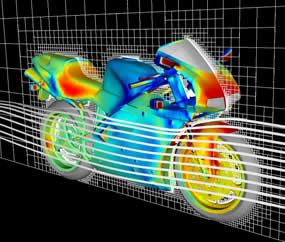 |
about harpoon | key benefits | features | technical spec | book a demo |
|
FAQ: How to deal with gaps in Harpoon Question How do I deal with small gaps using Harpoon? Answer There are two ways to deal with small gaps in Harpoon. The first is to preserve the gaps in the exported STL and then refine your mesh so harpoon also preserves the gaps. The second is to eliminate the gaps altogether using your CAD package and then export it as an STL. In order to preserve your gaps, export your geometry into STL as multiple parts. Then import the geometry into Harpoon and make sure that the preference for minimum number of cells betweeen two parts is set to something higher than one, for instance set this to 3. Also, make sure that the mesh in this critical area may not coarsen to a surface size that is greater than the smallest distance bewteen the two model parts. Then mesh it in harpoon. The second way to deal with gaps is to eliminate the gaps using your CAD software and export the STL without gaps. If you wish to eliminate your gaps, you can export your geometry as a single part or multiple parts. Use your CAD package to clean up the model lines and to smooth geometry transitions, then export the STL. It is bad practice to export a model with small gaps then use a harpoon mesh refinement larger than the gap size. Using mesh coarseness to clean up STL geometry results in unpredictable harpoon behavior. In summary, reduce your mesh size to capture the small detals, but never coarsen your mesh to eliminate gaps. Use your CAD package to eliminate gaps prior to exporting the STL. |
 |